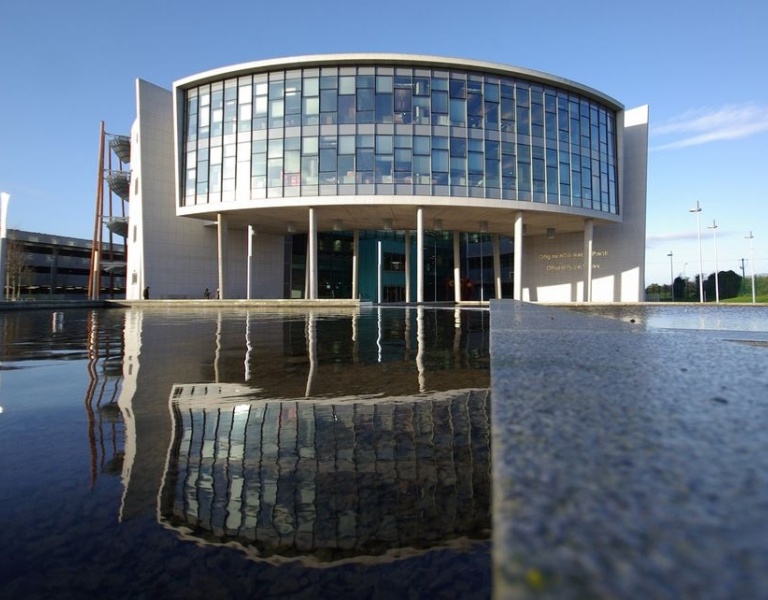Pathfinder - OPW Head Office, Trim
As part of the OPW's commitment to reducing energy consumption and waste, a large solar photovoltaic (PV) array was installed at the OPW Head Office in Trim.
Objective
The 2023 Climate Action Plan reaffirmed several targets for public bodies that had been originally introduced in previous iterations of the plan. These include a requirement that all public bodies must reduce their GHG emissions from burning fossil fuels by 51% by 2030, compared to a 2016-18 baseline. They must also reduce their electricity emissions in line with anticipated supply-side reductions. SEAI's pathfinder programme has been working collaboratively with public sector organisations to develop scalable solutions to meet these targets, for benefit across the public sector and the wider non-domestic sector.
The Office of Public Works (OPW) has one of the largest and most diverse property portfolios in Ireland, including Government offices, Garda stations and historic buildings such as Dublin Castle and the Custom House.
Background
The Office of Public Works (OPW) is a government office that delivers public services for flood protection, managing government properties and heritage services. Under the Pathfinder programme, OPW installed a large-scale solar photovoltaic panel array on the roof of the car park at their Head Office in Trim to offset electrical usage.
Project Description
The panels chosen for Trim were 355W Hanwha Q cells. These cells offer an output power warranty of 93.5% for 10 years and 86% for 25 years. The panels were installed in an East/West facing arrangement on the roof of the car park, with 350 panels being installed in total.
Four inverters and one G10 relay were installed alongside the PV panels to convert solar generated electricity into electricity that can be transferred to the grid. The solar inverters are Model STP 25000TL-30's (Sunny Tripower) by SMA Solar Technology AG. These inverters offer a yield efficiency of 98.4% and are flexible in compatibility due to their wide input voltage range. The G10 Relay (a Mainspro ComAp, designed for PV plants) monitors voltage, frequency, and loss of mains protections to safeguard the distribution network and generators.
Performance
PVGIS (photovoltaic geographical information system - software available through the EU Science Hub) can be used to predict PV performance at any location in Europe, with user inputs including installed peak PV power, array orientation and angle of installation of the panels from the horizontal plane. Figure 3 compares the expected electricity output from the installed array, as predicted using PVGIS, with the actual array output for 2023. The installation generated 94,700kWh, slightly higher than the predicted output of 92.000kWh. This equates to ~19% of total building electricity consumption in 2023.
Insights
This project successfully demonstrates the installation of a large PV solar array, delivering cost effective carbon abatement in line with expectations. As an isolated measure, the installation does not contribute to the public sector target of a 51% reduction in emissions from burning fossil fuels by 2030. Photovoltaics should therefore be considered as part of a larger package of measures in order to deliver more significant carbon savings at building level as the Pathfinder programme expands.
Read more about the Pathfinder Programme